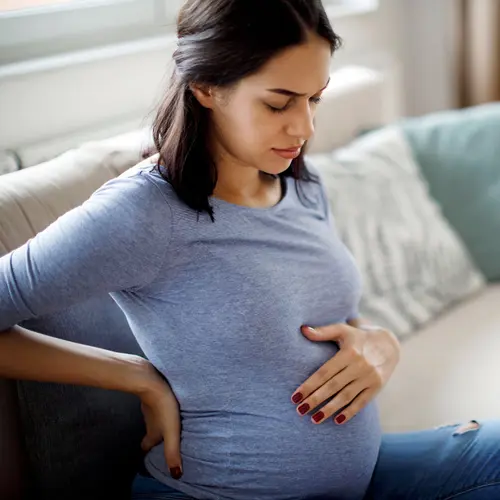When you plan for the days and weeks after childbirth, you might be thinking of essential items to care for your new baby. It's also important to gather items to help yourself recover from delivering the baby, like postpartum pads.
After giving birth—naturally or through cesarean section—a mother can experience postpartum bleeding for up to six weeks. While you’re busy caring for your newborn and recovering from birth, postpartum pads can offer comfortable and leak-proof protection.
What Are Postpartum Pads?
Postpartum bleeding is often much heavier than a typical period, especially for the first 10 days. Special maternity pads can help absorb the heavier bleeding while still keeping you comfortable and secure while you recover from delivery.
The pads tend to be thicker and more absorbent, holding more fluid than a typical menstrual pad. They also tend to be longer and wider in the back, with wings for added security.
Most postpartum pads are made with a soft material that offers gentle cushioning. This comfort is important if you’ve had stitches, you have postpartum perineal pain, or you’re experiencing general pain, discomfort, and swelling.
In addition to being extra absorbent, postpartum pads are also safer to use than tampons or menstrual cups. After birth, you may still have tears or cuts in or around your vagina. Using these internal menstrual products can increase your chances of getting an infection.
Postpartum pads can also be useful before giving birth. Some people use these pads when traveling to the hospital or to prevent leaks after their water has broken.
Postpartum Bleeding: What to Expect
Regardless of whether you had a vaginal delivery or a C-section, you’ll likely experience bleeding from your vagina post-birth. This bleeding, known as lochia, contains mucous, tissue, and blood from the lining of your uterus.
While the bleeding will likely start very heavy and red in color, the bleeding will reduce over time and become dark brown, pink, or white. It may feel similar to a period, but much heavier and lasting longer. Postpartum bleeding typically stops between four and six weeks after delivery.
In addition to heavy bleeding, you may notice other physical changes. If you begin breastfeeding, your womb will contract, causing cramps similar to period pains.
When to See a Doctor for Postpartum Bleeding
Heavy bleeding after childbirth is normal and to be expected. However, you should speak to your doctor if you experience any of the following symptoms:
- Temperature over 100.4 ℉
- Bleeding that becomes heavier
- Severe abdominal pains
- Large or frequent clots (larger than a quarter)
- Vaginal discharge with an unusual smell
- Vomiting
- Increased swelling
- Breasts that are sore, red, or hot to the touch
These symptoms could be a sign of an infection. In rare cases, someone may experience postpartum hemorrhage after birth, which requires emergency care. Seek urgent medical attention if you experience:
- Bleeding that suddenly gets heavier
- Bleeding that stops and starts again
- Dizziness or fainting
What to Look for in Postpartum Pads
After delivery, postpartum bleeding can be heavy and uncomfortable. To keep yourself secure while caring for your new baby and recovering from the birth, you need postpartum pads that are comfortable and supportive. Here are a few things you should look for in a postpartum pad:
Soft. A postpartum pad should be soft and gentle on the skin. After giving birth, you may experience soreness and sensitivity. If you’ve had stitches, it’s even more critical that you don’t experience chafing against raw skin.
Breathable. Your postpartum pads should be breathable, allowing for circulation to your vaginal area. Keeping this area dry can prevent infection and promote better healing.
Absorbent. Vaginal bleeding after delivery can be especially heavy for the first few days as your body expels tissue and blood from the uterus. Postpartum pads are specially made to absorb heavy bleeding. However, you may still need to change it regularly.
Flexible. You may find yourself trying to care for your baby while also recovering from the birth. Your postpartum pads must be flexible and conform to your body, keeping you secure from leaks as you lay down, sit down, stand up, and walk.
Supportive. Your body may go through significant changes post-birth. It’s crucial that your postpartum pads offer you support to make you feel more secure. A supportive pad is less likely to shift while you move around, including when you’re sleeping. The pad should be long and wide enough to prevent leaks while standing up and lying down.
In addition to a strong and supportive pad, look for underwear that also offers significant support to keep the pad in place. Underwear should be broad around the vaginal area and high-waisted to keep the pad firmly in place.


